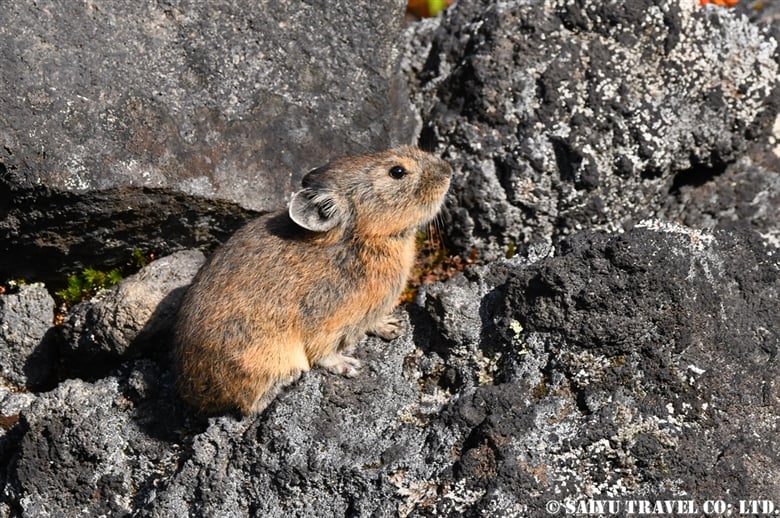
In the high mountains of central Hokkaido, the lovely pika, which is said to be a survivor of the ice age, can be found. The species seen here is the Japanese pika (Ochotona hyperborea yesoensis), a subspecies of the northern pika (Ochotona hyperborea). It prefers a cool climate, and its optimal temperature is said to be around 12 degrees Celsius.
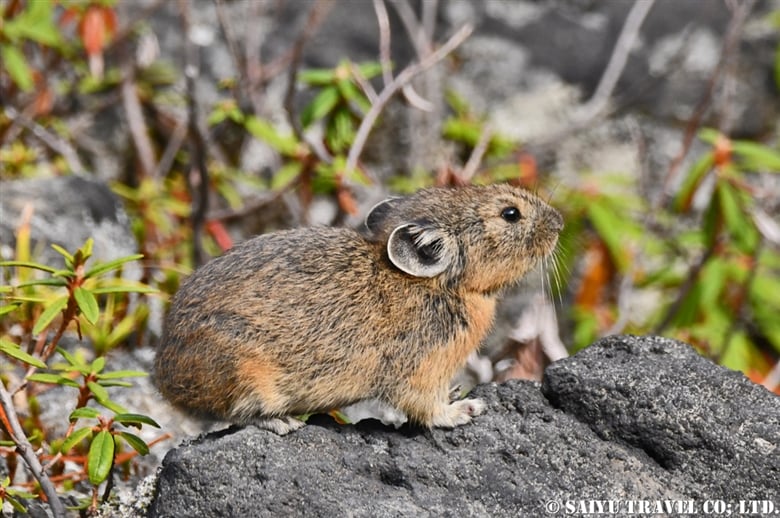
What is a Pika?
Pika are quite different in appearance from their close relatives, rabbits, being small (15-18 cm in length), with rounded, short ears, a short tail hidden from view by body hair, and short legs, giving them the appearance of a mouse or hamster at first glance. However, their dental structure is the same as that of rabbits, and they cannot grasp objects with their paws like rats. The Japanese name of the Pika is nakiusagi, which can be translated as “whistling hare.” As its name implies, the pika produces distinct sounds: the male makes a series of strong chirps, chit-chit, chit-chit, four to sixteen times in succession, while the female makes only a single or irregular series of sounds.
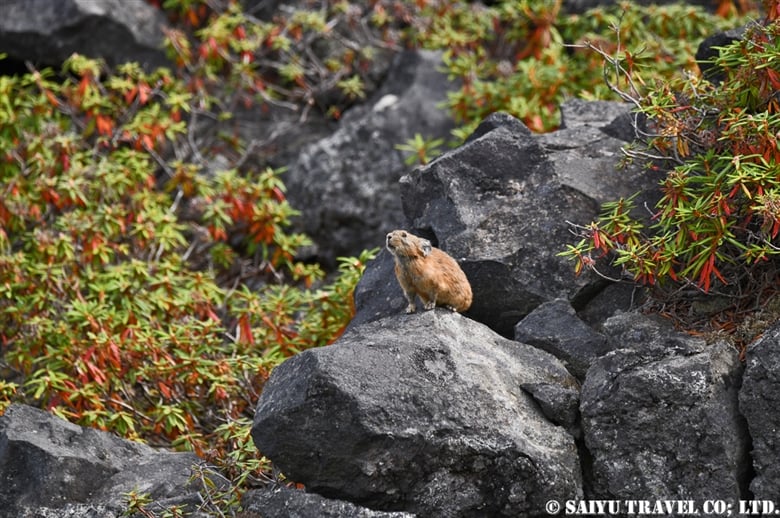
The pika’s habitats include exposed rock zones or “scree slopes,” where rocks of various sizes are piled up, providing a refuge from predators such as Ezo stoats, least weasels, and Ezo red foxes. They also allow the pika to benefit from the cool air in the crevices between the rocks in summer. The presence of bushes and forests nearby where food can be obtained is also a prerequisite.
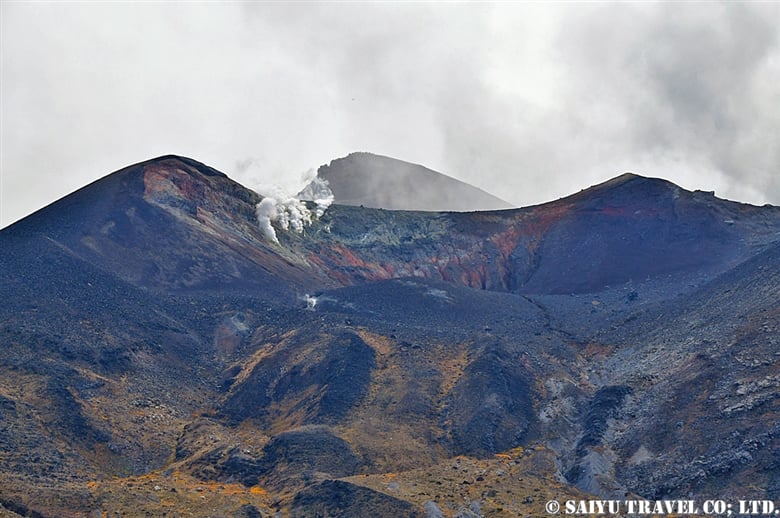
The Japanese Pika of Tokachi-dake Mountain
Japanese pikas can be seen in abundance in the scree slopes of Bogakudai, the trailhead for Tokachi-dake Mountain. Pikas do not hibernate, and autumn is the best season for observation as they become more active in order to store food. Especially when it is sunny and moderately warm with no wind, they stay still on the rocks and sunbathe, which is good for photography and observation. Chipmunks, which prefer a similar environment, can also be seen.
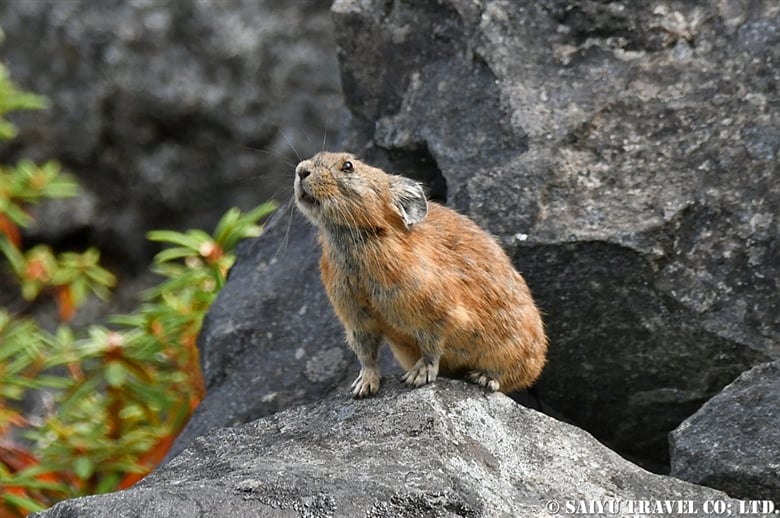
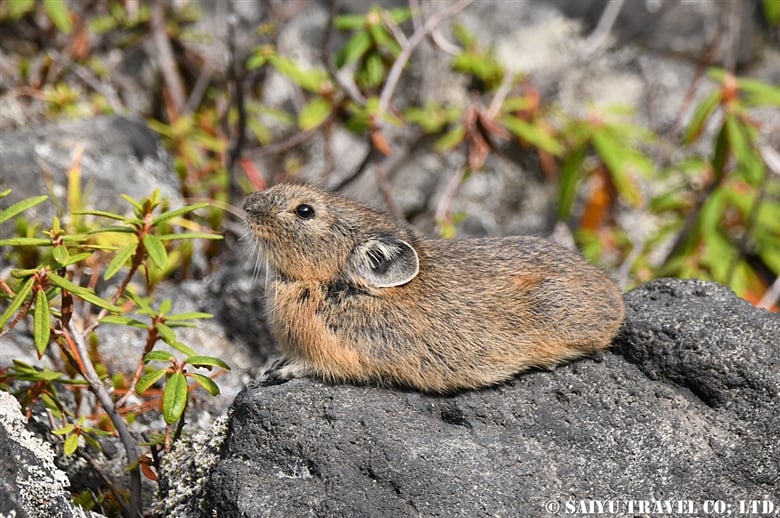
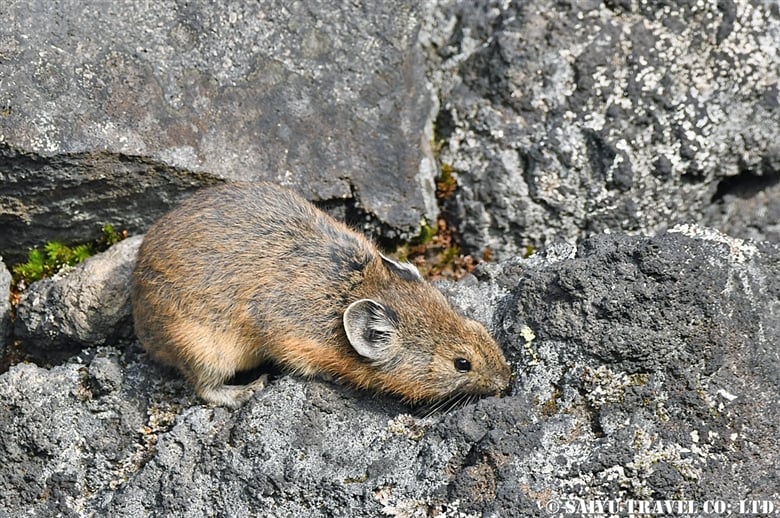
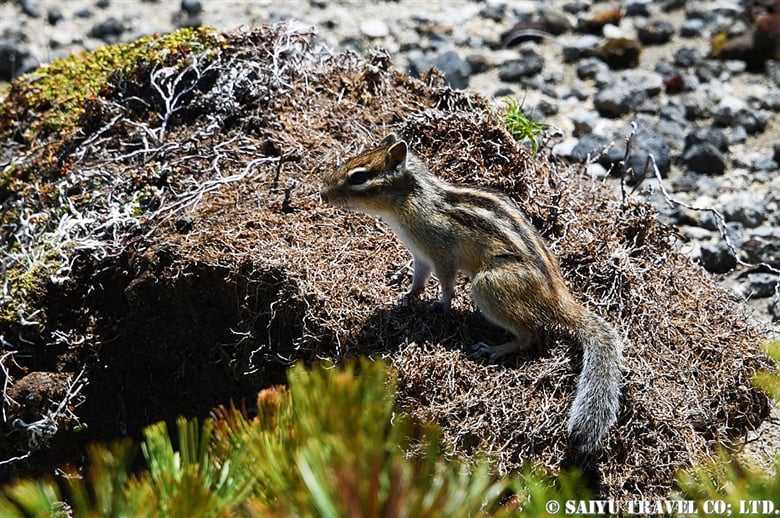
Places to Visit in Conjunction
It is 44 km from Asahikawa Airport, so it takes less than an hour to arrive at the parking area of Tokachi-dake Bogakudai by car.
On the way there, you can also visit beautiful scenic spots such as the Blue Pond of Shirogane Onsen and the Hills of Biei to take pictures. You can stay at Shirogane Onsen, visit the Blue Pond in Shirogane Onsen in the early morning, then observe pikas in the morning, and visit the hills of Biei in the afternoon.
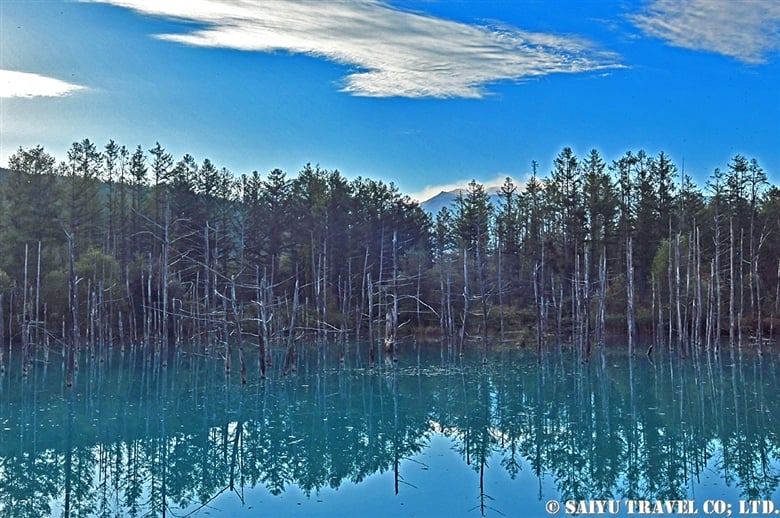
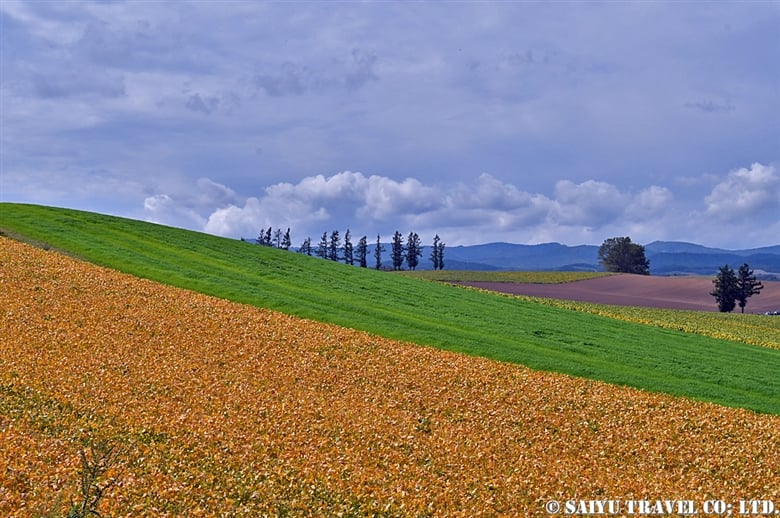
In autumn, the air is clear and you will encounter beautiful scenery!
Photo & text : Hiromichi HAYASHI
Observation : Tokachi-dake Mountain, Hokkaido
*Contact us, Saiyu Travel for more information about wildlife and bird watching in Hokkaido. We can make various arrangements for your trip. We operate a guesthouse, Shiretoko Serai, in Rausu, Shiretoko and Teuri Island. both are perfect location for wildlife lover.
*Youtube : Wildlife of Japan
Tags: Tokachi-dake, Bogakudai, Wildlife of Hokkaido, Saiyu Trave Japan, Wildlife of Japan, Wildloife Photography Tour Japan, Birds of Japan, wildife tour of Hokkaido, Wildlife tour in Hokkaiddo, Japanese Pika, ナキウサギ, Nakiusagi, Tokachidake




